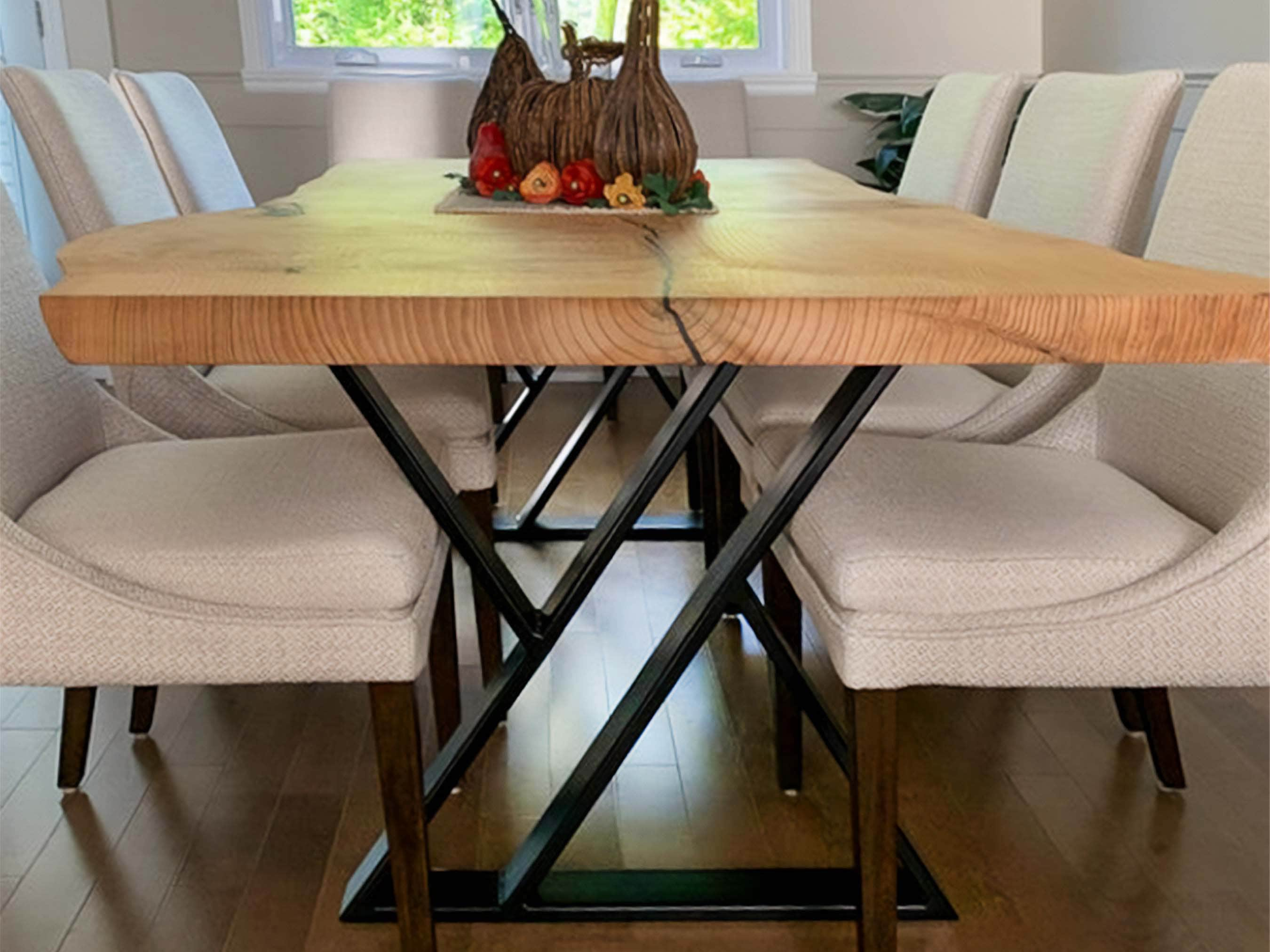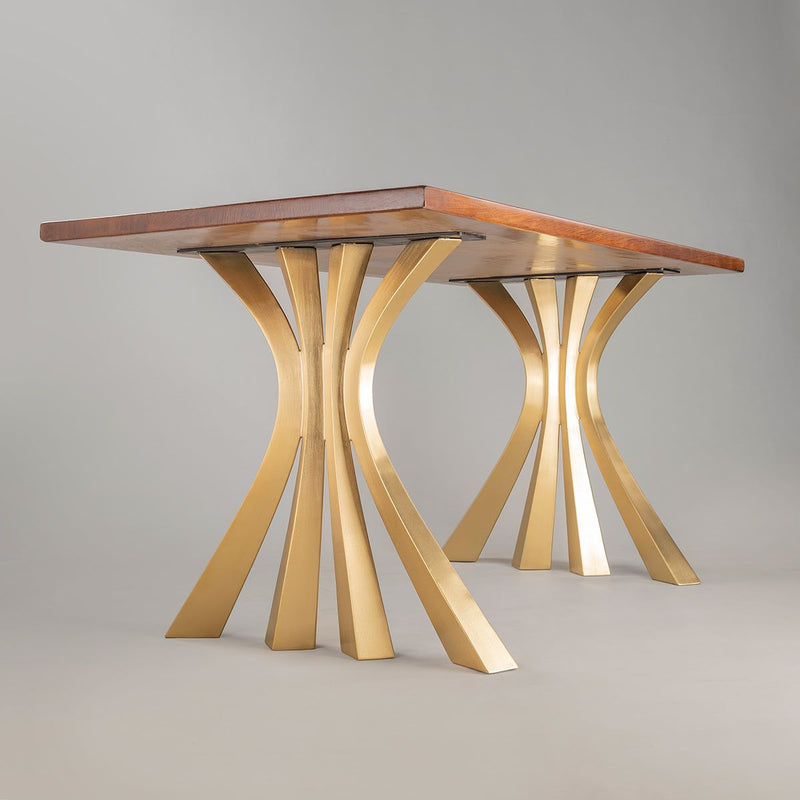Special Dining Room Table Legs to Transform Your Dining Location
Special Dining Room Table Legs to Transform Your Dining Location
Blog Article
Picking the Perfect Dining Table: What Styles Work Best for Your Home?
Selecting the suitable table for your home can be a nuanced procedure that balances aesthetics and performance. Whether your area leans in the direction of typical beauty, modern minimalism, rustic charm, or industrial trendy, the variety of designs offered can deal with diverse tastes. Each style uses one-of-a-kind benefits and obstacles that can either enhance or disrupt your eating location's consistency. Comprehending how different materials, shapes, and sizes engage with your existing decor is vital. To browse these options successfully and locate a table that genuinely matches your home, consider the complying with facets in detail.
Evaluating Your Space
Examining the measurements and design of your dining location is an important very first step in choosing the perfect table. Begin by gauging the length and width of the area, accounting for doorways, home windows, and other architectural functions that could affect table positioning. This guarantees that your table not only fits but likewise allows for comfortable motion around it.
Take into consideration the number of individuals you normally captivate. A table needs to fit your home's daily requirements while offering sufficient adaptability for occasional guests. Generally of thumb, designate at least 24 inches of table size each to make certain a comfortable eating experience.
It's additionally important to keep suitable clearance around the table. Ideally, there should go to the very least 36 inches between the table edge and walls or various other furnishings, allowing very easy gain access to and motion. For spaces where chairs with arms or added storage units like buffets are involved, boosting this clearance to 48 inches is recommended.
Lighting and ambience play substantial roles. Make sure that your dining table aligns with existing illumination fixtures or prepare for ample lighting services. This thorough spatial evaluation warranties that your eating table not just fits literally but also integrates with your space's total functionality and visual.
Popular Table Styles

Traditional table usually feature ornate information, bent legs, and rich wood surfaces, evoking a sense of classic sophistication. They are ideal for homes with timeless design or those wanting to add a touch of refinement to their eating location.
Modern dining tables focus on simpleness and clean lines, typically incorporating products like glass and steel. These tables are excellent for contemporary spaces, supplying a sleek and minimalist appearance that matches minimalist design ideologies.
Rustic eating tables, on the other hand, emphasize natural products and a handmade look - dining room table legs. They often feature recovered timber and a distressed finish, creating a cozy and welcoming environment. These tables work well in farmhouse-style homes or those looking for a comfortable, natural feeling
Industrial eating tables integrate basic materials such as steel and timber, usually showcasing a practical visual. This design is well-suited for lofts or city spaces, including a touch of sturdy charm and sturdiness to the dining experience.
Each design supplies distinct benefits, making it crucial to pick one that aligns with your home's overall layout and your personal preferences.
Product Choices
When selecting an eating table, the option of material plays an essential function in figuring out both the table's looks and performance. Wood, steel, glass, and composite products each deal unique benefits and challenges, making it imperative to straighten the material with your home's decor and way of living requirements.
Wood is an ageless and versatile alternative, available in ranges such as oak, walnut, and mahogany. Known for its resilience and heat, wood complements both standard and modern insides. However, it calls for routine upkeep to stop scrapes and warping.
Steel tables, usually crafted from stainless steel, light weight aluminum, or wrought iron, are praised for their modern charm and toughness. They are especially fit for commercial or minimal settings however can be susceptible to dents and might feel chilly to the touch.
Glass eating tables bring an air of style and openness, ideal for smaller sized rooms as they develop an illusion of more room. While easy to clean, glass can be vulnerable to spots and calls for careful managing to prevent chips and fractures.
Composite materials, such as MDF and plywood, deal cost-efficient and personalized options, though they may lack the longevity of natural materials. Selecting the appropriate internet material ensures your dining table is both a useful asset and a visual joy.
Sizes And Shape Factors To Consider
After identifying the ideal material for your table, the following consideration is choosing the appropriate form and size to suit your room. The form of the table substantially affects the area's visual and capability. Rectangular tables, the most typical shape, are optimal for bigger spaces and can accommodate a higher number read more of guests. They also enable an extra formal dining experience. Alternatively, round tables cultivate a sense of affection and are exceptional for smaller eating areas, motivating conversation by removing corners and making every person feel similarly included.
As a policy of thumb, designate at the very least 24 inches of table size per person to guarantee comfortable dining. Additionally, consider the table's clearance space: there should be at least 36 inches in between the table side and the wall surfaces or various other furniture. Extending tables offer flexibility if you frequently organize bigger events, offering extra seating when required without inhabiting additional area daily.
Matching Your Design
Picking a dining table that balances with your existing decor is essential in creating a cohesive and welcoming space. A smooth, minimal table with clean lines is suitable for a modern home, while a vintage, elaborate table matches a more conventional setup.
Color and material are similarly substantial. If your decor features cozy tones and all-natural materials, think about a wood table to boost the organic feel. Alternatively, a glass or steel table may be much more proper in a room dominated by amazing shades and commercial components. Pay attention to the surface, as it must mirror various other furnishings and components to maintain harmony.
Appearance plays a crucial role as well. A rough-hewn, reclaimed wood table can add character to a rustic area, while a sleek marble surface area can boost a lavish eating location. Take into consideration the range and proportion of the table in relation to the room dimension and existing furnishings. A well-matched eating table not only enhances aesthetic allure however likewise enriches the total eating experience.

Verdict
Selecting the perfect eating table demands careful consideration of area, design, materials, form, and dimension (dining room table legs). Typical tables complement classic insides with abundant timber surfaces, while modern-day tables match contemporary settings with glass and steel. Rustic styles present heat click resources using all-natural products, and industrial styles enhance urban environments with raw aspects. Balancing the eating table with existing decoration makes certain both capability and aesthetic allure, adding to a natural and cosmetically pleasing eating location.
Report this page